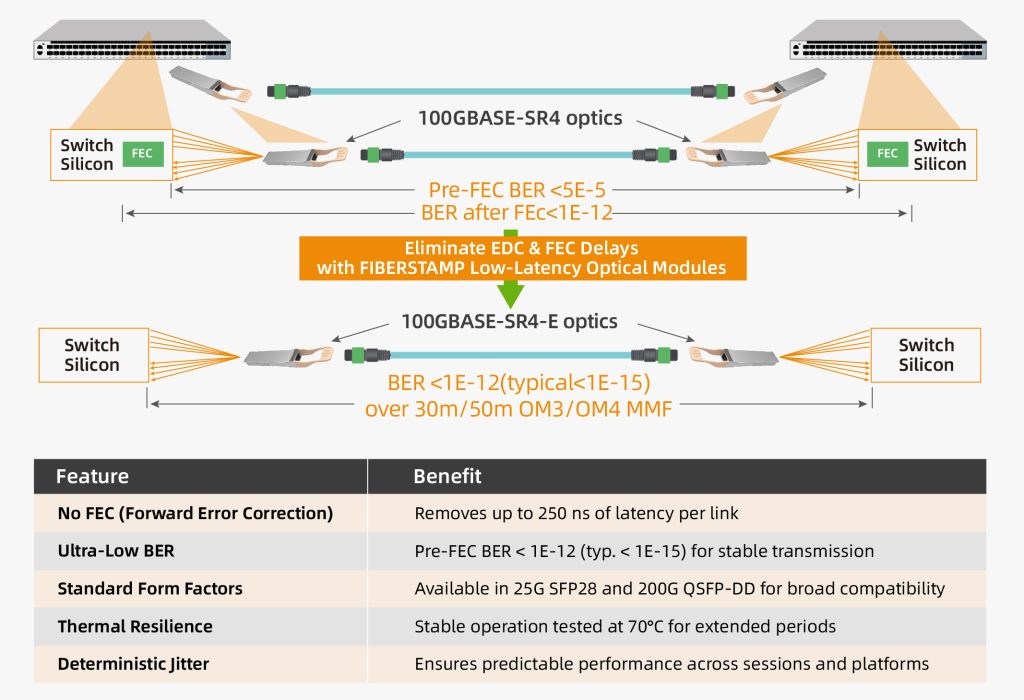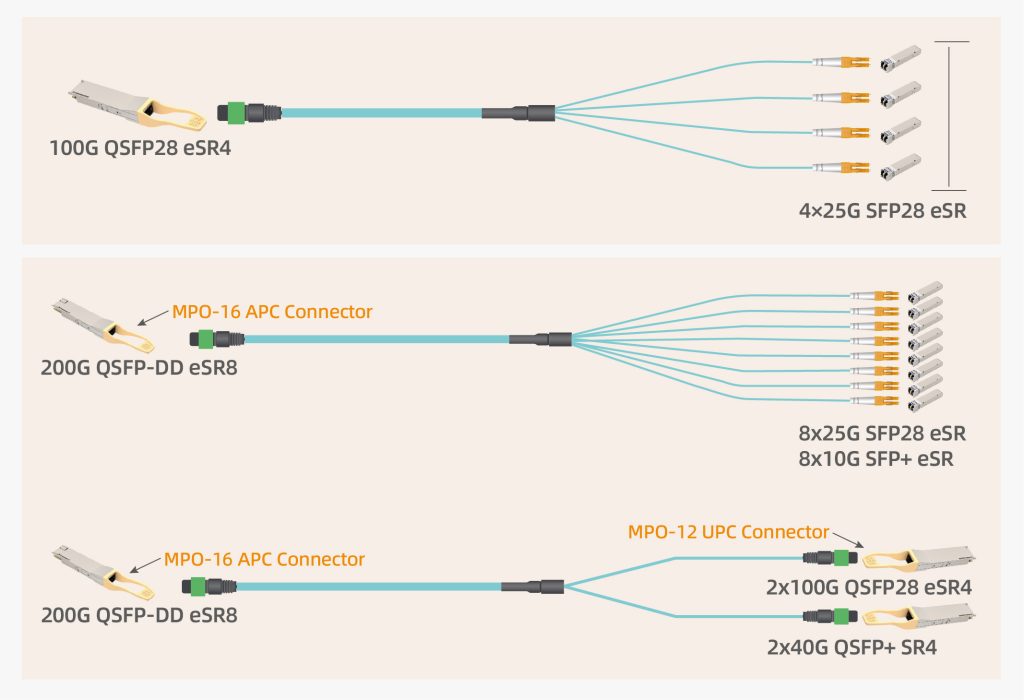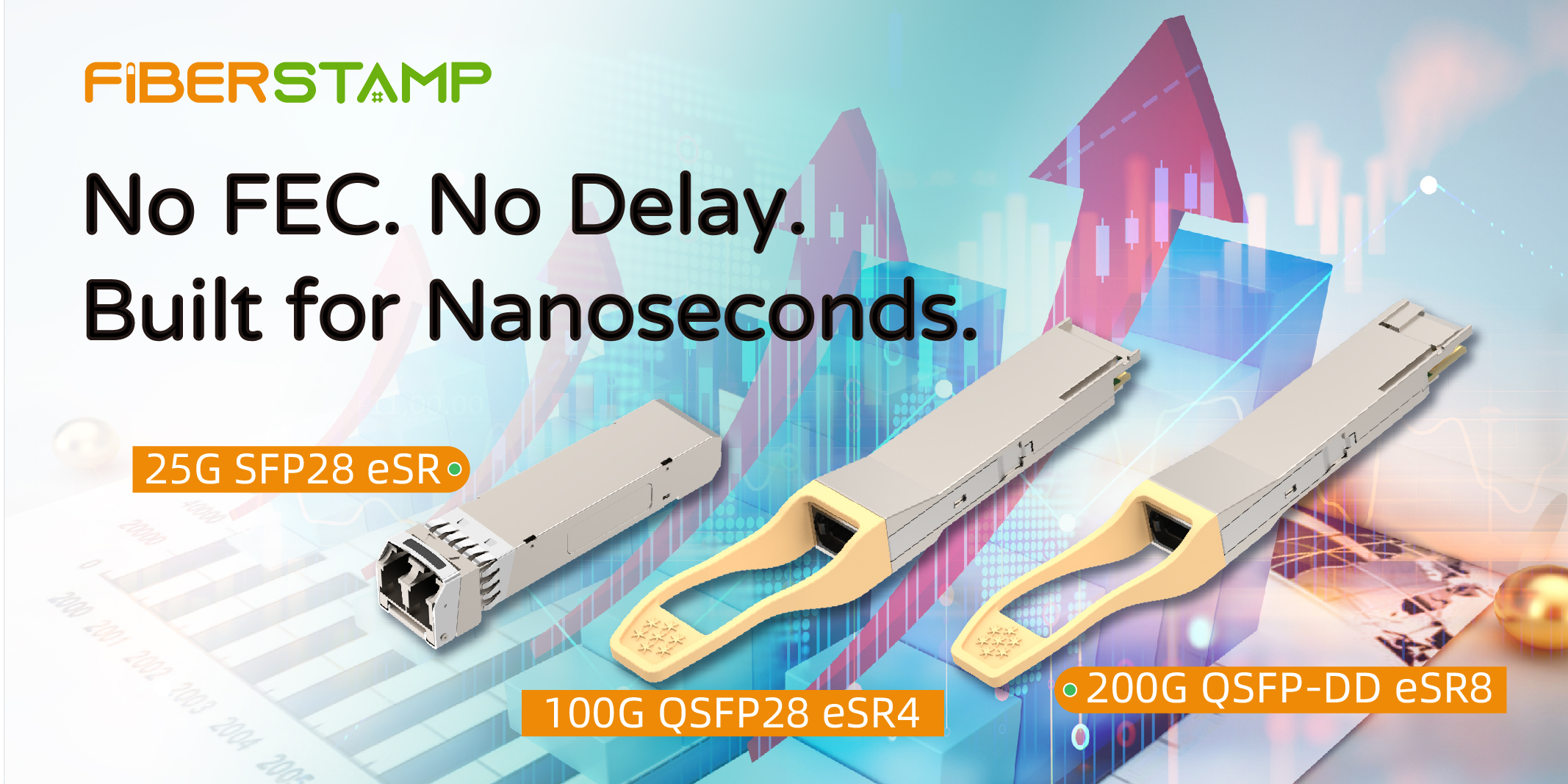As high-frequency trading (HFT), AI inference, and edge computing infrastructure push toward real-time responsiveness, network architects are reevaluating one of the most overlooked layers of the stack: the optical interconnect.
Historically, optical transceivers have been optimized around bandwidth and reach. But as system-level latency becomes a profit driver and performance bottleneck, particularly in nanosecond-sensitive environments, deterministic low latency is emerging as the new design frontier.
The Trade-Off of FEC: Error Resilience vs. Latency
Most 25G/100G Ethernet optical links rely on Forward Error Correction (FEC)—such as RS-FEC—to reduce the Bit Error Rate (BER) below 1E-12. While effective in protecting against signal degradation, these schemes introduce significant latency, typically between 200–250 nanoseconds per link.
This added latency is acceptable in general-purpose data networks. However, it becomes a critical limitation in real-time systems like:
- Ultra-low-latency financial trading
- AI workloads sensitive to cache and interconnect delays
- Closed-loop edge control systems and TSN environments
In these scenarios, every nanosecond matters—and FEC processing becomes a performance liability.
FIBERSTAMP’s Zero-FEC 25G SFP28 SR: Designed for Real-Time Demands
To address this bottleneck, FIBERSTAMP has developed a FEC-free 25G SFP28 SR ultra-low-latency optical transceiver, purpose-built for environments where latency is non-negotiable.
Key Highlights:
Zero-FEC Architecture
Eliminates encoding/decoding latency entirely, removing up to 250ns from the data path.
Outstanding BER Performance
Despite FEC removal, typical BER remains below 1E‑15, with <1E-12 guaranteed under standard operating conditions.
Thermal Stability for Edge and Co-location
Passes stress testing at 70°C for 30+ minutes, ensuring reliable deployment in dense, high-power environments.
Clean Signal Integrity at 25.78 Gbps
Integrated laser driver and limiting amplifier support low jitter and strong eye openings, even without DSP processing.

Plug-and-Play Compatibility: No Network Redesign Needed
FIBERSTAMP’s ultra-low-latency module is validated with mainstream switch and NIC platforms, offering full plug-and-play interoperability. This ensures fast integration without rearchitecting the entire network—an essential advantage in:
- Regulated environments like finance
- Edge deployments where engineering resources are limited
- Any use case where latency optimization must not introduce operational complexity

Why This Matters: Deterministic Latency Is Now a Business Metric
In the trading world, latency Is Currency. For AI and edge systems, latency determines feasibility. Across all industries, predictable infrastructure is quickly becoming a strategic differentiator.
By eliminating FEC overhead while maintaining signal quality, FIBERSTAMP’s zero-FEC modules are setting a new standard for optical interconnects—one that favors speed, stability, and simplicity.
Conclusion: Building the Future of Predictable Infrastructure
As system architectures reach physical limits, latency becomes the decisive variable. Bandwidth alone is no longer sufficient. The need for deterministic, low-latency, and thermally robust optical interconnects is reshaping design priorities across finance, AI, and edge computing.
FIBERSTAMP is proud to lead this shift—providing the building blocks for next-generation low-latency networks through high-performance, zero-FEC optical modules.
Explore FIBERSTAMP’s Zero-FEC Product Line →
https://www.fiberstamp.com/200g-qsfp-dd-sr8.html
https://www.fiberstamp.com/100g-qsfp28-esr4.ht





